Living Cities: Bridging the green
The Trust’s Living Cities publication outlines practical actions that can be taken to embed nature into the urban environment. Our Living Landscape Programme Manager Ian Mackenzie outlines why long-term planning is vital to work towards bridging small islands of nature in Edinburgh.
Edinburgh Living Landscape has a long-term vision to put nature into the heart of the city’s future. To achieve this, we need to work strategically to connect green infrastructure through networks of micro-scale measures including pocket parks, street trees and other natural features.
As a city dweller, there is something about getting up high and allowing your eyes to stretch out to the horizon. Most years, as soon as the sun comes out, I find myself hiking to the summit of Arthur’s Seat. From this key vantage point you can see how many just how many wild places the city contains.
Parks cut through rows of tenements, the city’s hills poke up out of the suburbs, and the rivers and burns ribbon north and open to the sea. To a greater or lesser extent, all of these features are valuable homes for wildlife, but it is the big picture that counts.
At a city scale, it is not enough to have small isolated pockets of wildlife. We need to provide connections to increase natural resilience, and ensure nature has a home for generations to come.
The twin threats of climate change and increased development mean that we cannot continue to chip away at the natural spaces that support the health of the city. We need a plan that can tackle this at multiple scales, and create new habitats and connections.
The approach to ecological urbanism proposed by the Scottish Wildlife Trust in Living Cities: towards ecological urbanism provides a framework to do this.
By combining the key concepts of ecology and urbanism it creates a simple model to increase structural diversity, naturalness and connectivity across the city. This approach to urban planning puts nature at the centre of the design process that will be needed if we want it to be at the heart of the city.
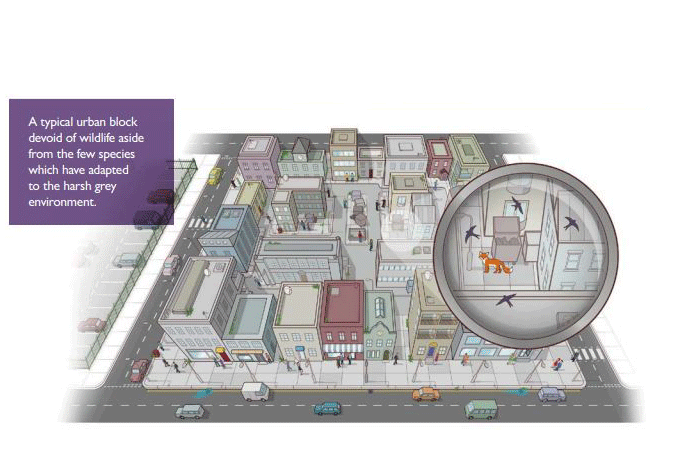
Taking action at multiple levels
The Edinburgh Living Landscape partners are working hard to change the city so that wildlife is ‘designed in’ from the start. To achieve this we have been working at multiple scales on a range of projects.
At the micro-scale the Edinburgh Pollinator Pledge has inspired more people to work to improve their gardens. The results of a four-year study carried out by the University of Edinburgh (among others) found that the city’s gardens and allotments are a haven for insects that help plants flourish. Our Pollinator Pledge aims to create a network of people and habitats that support these insects.
A network is now spreading across the city, with gardens and school groups signing up to plant for pollinators, make more space in their garden for wildlife and spread the message about the network. I like to think of each of these pledges forming a pit stop along a bee superhighway that stretches across the city.
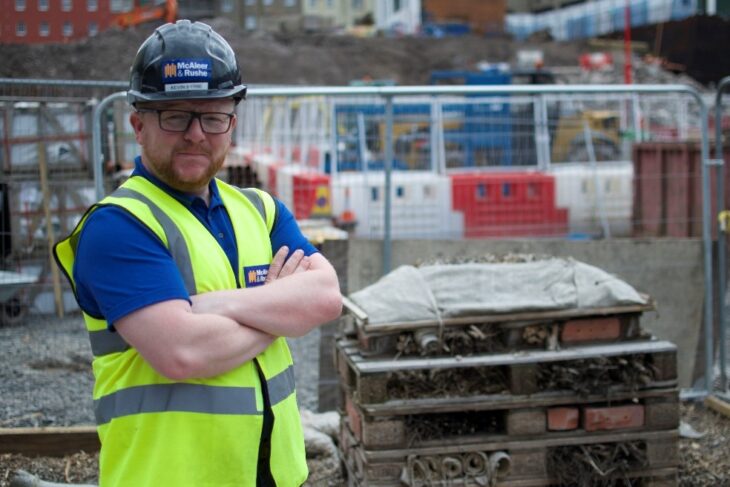
Up on the rooftops we have been working with businesses and the public sector to maximise the contribution that this space makes to the diversity and connectivity of the city.
The Square Metre for Butterflies takes over just one square metre on a roof top or green roof and provides caterpillars with the food plants they need to grow. This project has now delivered at 12 locations, and early results indicate that these are well used by a wide range of insects in areas where there is often very other little wildlife habitat available.
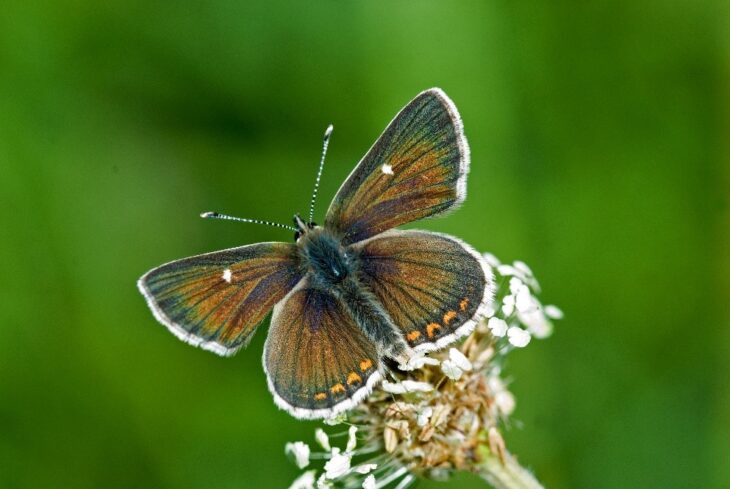
At a larger scale the City of Edinburgh Council is changing the way it manages parks to create more habitat for wildlife and increase the naturalness and structural diversity. There are now 72 new meadows across the city, and 13% (approximately 104 hectares) of the Council’s standard amenity grass has been transformed into naturalised grassland.
This work has transformed a number of underused and species poor grasslands into rich and attractive spaces. Since the project started in 2014 we have adapted the management of these areas. We have learned where these areas work best and how they need to be maintained to create the best wildlife habitats, while ensuring people accept the change in their local greenspaces.
In Edinburgh, naturalised grassland is becoming the new normal. It is widely accepted that not every square inch of grass is mown three times a year, and that woodland edges are softer and more natural.
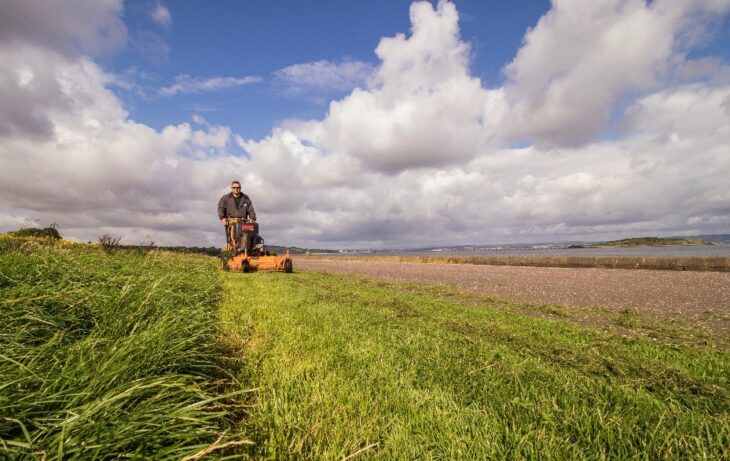
Edinburgh’s parks and large greenspaces provide the features that gardens and allotments can bridge to and I am very proud to have played even a small part in the development of Little France Park, Edinburgh’s largest new park in a generation.
Thanks to the hard work of the city council and the Edinburgh & Lothian Greenspace Trust Little France features some great paths and more natural habitats.
Over the past few years hundreds of trees have been planted by volunteers, and funding has been secured to restore hedge rows and create new areas of species rich grassland creating a habitat network linking Arthurs Seat to the wider countryside in East Lothian.
This means an area that was once derelict agricultural land with limited wildlife value, is now well on its way to being Edinburgh’s next local nature reserve.
One final observation that you can’t fail to make from the top of Arthur’s Seat (unless the harr is in!) is that Edinburgh is a coastal city with long , sweeping shoreline. Until recently the city has turned its back on this important asset, dumping waste into the sea and compressing nature into an ever- narrowing strip between concrete shore defences and the Firth of Forth.
Step forward the Edinburgh Shoreline project, which is beginning to explore and celebrate the city’s 17-mile coast. This project is working with communities to tackle these challenges installing man-made habitats on the stark sea walls, undertaking large scale removal of plastics, and creating flower-rich habitats to create a coastal corridor for pollinators.
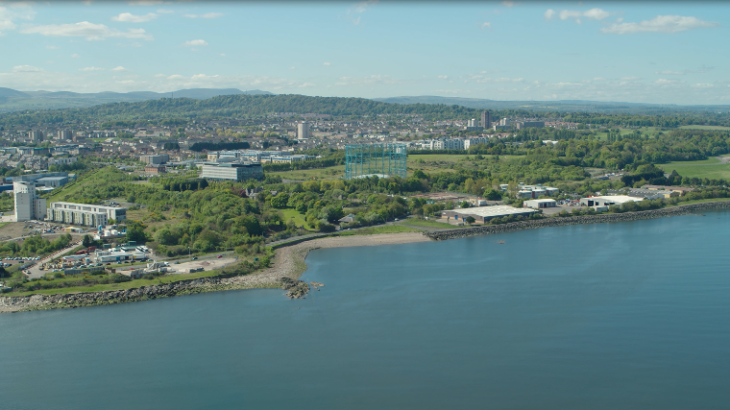
Bold ideas for the future of our city
To tackle the challenges we face as a city we need more bold ideas like Little France Park and the Edinburgh Shoreline project. We have to challenge how things are done, and ask ourselves if the changes we are making now will support future generations.
Some of the key questions that are on the horizon include whether developments such as the new St James’s Centre are fulfilling their potential to integrate good quality green infrastructure; could a new network of tramlines also carve out wildlife corridors; and how climate change will reshape the city’s shoreline.
With our long term vision and a partnership representing a broad spectrum on interests, Edinburgh Living Landscape stands ready to help Scotland’s capital meet such challenges head on.
Help protect Scotland’s wildlife
Our work to save Scotland’s wildlife is made possible thanks to the generosity of our members and supporters.
Join today from just £3 a month to help protect the species you love.
Preface
The Trust’s Living Cities publication outlines practical actions that can be taken to embed nature into the urban environment. Our Living Landscape Programme Manager Ian Mackenzie outlines why long-term planning …
